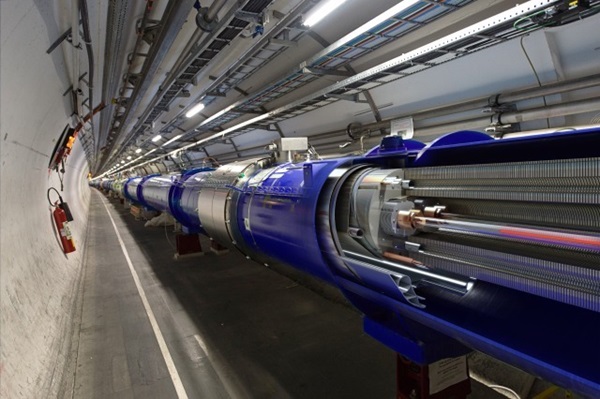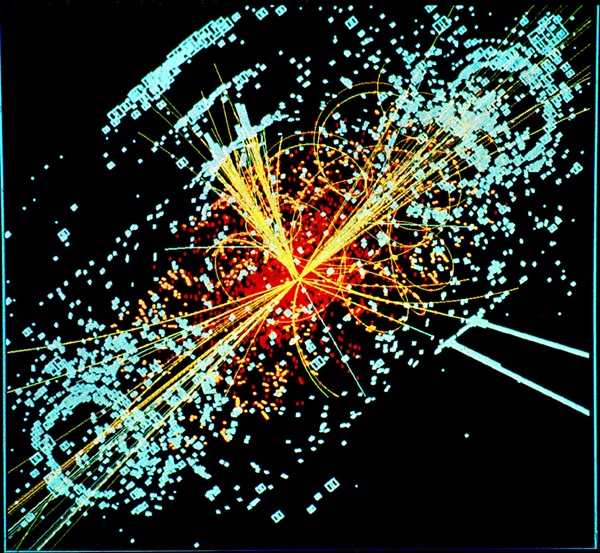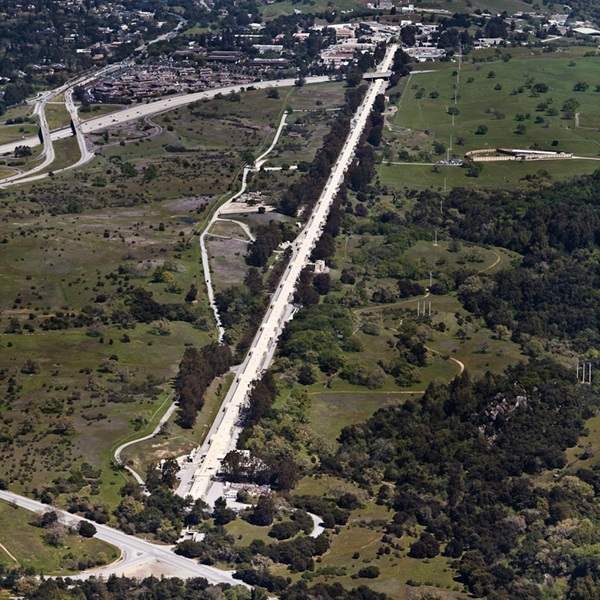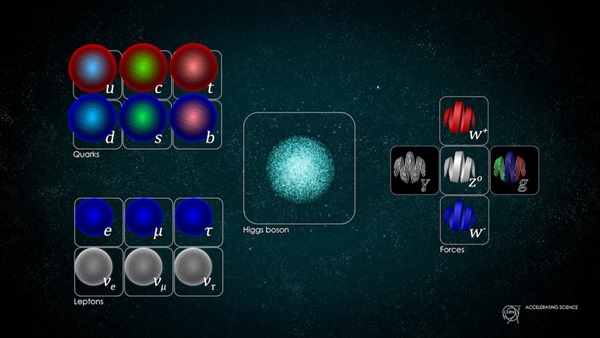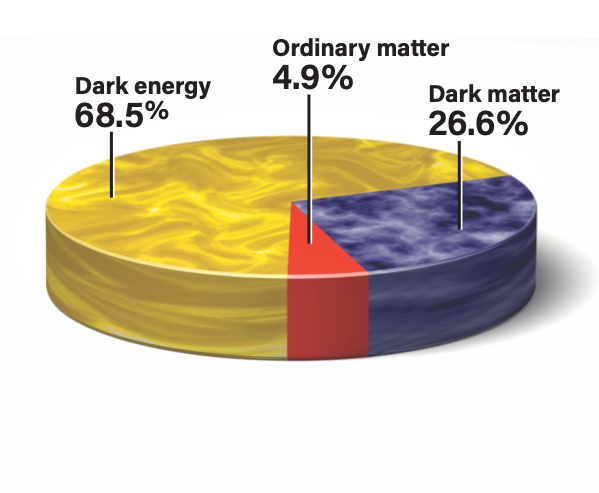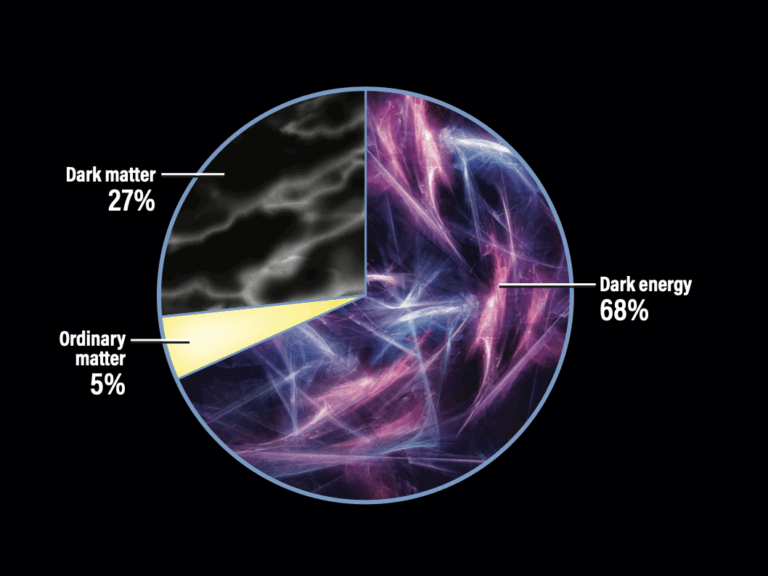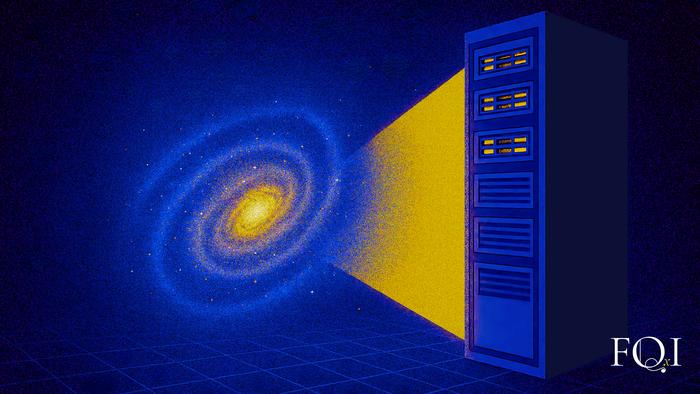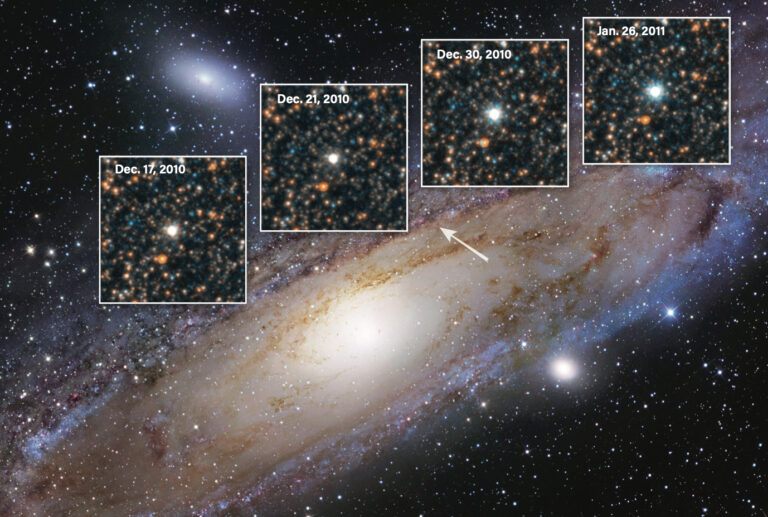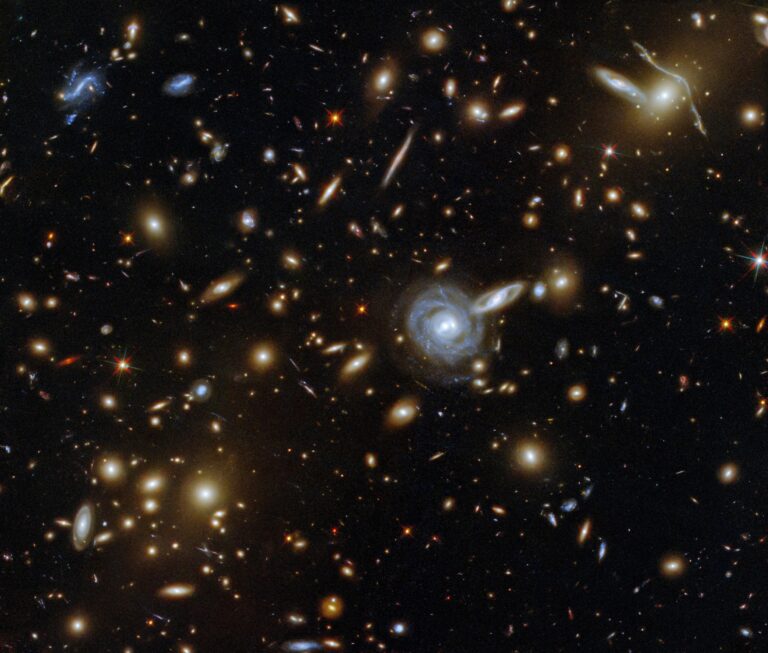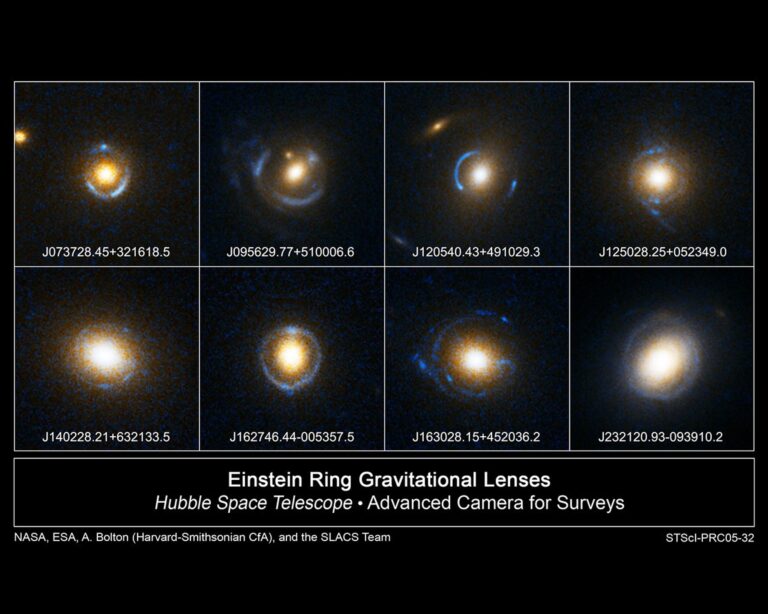Key Takeaways:
- Particle accelerators smash tiny particles together to reveal the universe's building blocks.
- These machines have grown dramatically in size and power over time, leading to major discoveries.
- The Large Hadron Collider (LHC) found the Higgs boson, a particle giving other particles mass.
- Future accelerators aim to explore dark matter, dark energy, and refine our understanding of the Higgs boson.
TRANSCRIPT:
Some of the most fundamental questions about our universe are also the most difficult to answer. Questions like what gives matter its mass, what is the invisible 96 percent of the universe made of, and what’s the difference between matter and antimatter? To answer these questions, scientists need to understand the microstructure of the universe. They need to control and collide minuscule particles that are hard to hold in place. They need to work at a scale that is so small, it’s almost unimaginable.
This is Knowable and I’m Charlotte Stoddart.
Matter is made up of atoms — atoms like carbon, nitrogen and helium. These atoms are made up of small particles called electrons, protons, and neutrons. To understand our universe, we need to understand how these particles interact. Physicists worked on this problem throughout the 20th century. They realized that protons and neutrons are actually composed of even smaller particles, and they came up with what’s called the Standard Model of particle physics. This theory describes the elementary particles — the smallest building blocks of our universe — and how they interact. Michael Peskin is one of the theoretical physicists who has spent his career figuring out the details of this theory.
Michael Peskin: “It’s so far from human experience, that it’s hard to explain to people that you can know about this. We explore distances that are 10,000 times smaller than an atomic nucleus. So I think a reasonable person can doubt that we can ever really get significant knowledge about things that are so far away from things we can actually grasp. And this is what accelerators do — they bridge that gap.”
Accelerators are machines that can accelerate particles to high energies and collide them. They enable physicists to study elementary particles in detail and to discover new ones.
Michael Peskin: “They make striking pictures. Sometimes it’s really even more the pictures than the data that enable us to have confidence that we really understand what nature is doing at these very inaccessible scales.”
These days, the most cutting-edge particle accelerators are vast machines like the LHC, the Large Hadron Collider at CERN, which is built underground and has a 16.7-mile (27-kilometer) circumference. But they started off as devices that could fit into a single room, or even on a tabletop. This is the story of how particle accelerators got bigger and more powerful, and how they’ve been crucial to our understanding of the most fundamental structures and interactions in our universe.
For a long time, scientists believed that atoms were the smallest objects in the universe; the word atom comes from the Greek atomos, meaning “indivisible.” But by the early 1900s, scientists were learning that things were more complicated.
A physicist called J.J. Thomson proposed that there are negatively charged “corpuscles” that are much smaller than atoms and are actually tiny pieces of atoms. These particles are now known as electrons. Then, in 1911, physicist Ernest Rutherford demonstrated that the atom is not a uniform solid, but has its mass concentrated in a very small central body, now known as the nucleus. Physicists would soon realize that the nucleus contains small particles called protons and neutrons. Meanwhile, after discovering the nucleus, Rutherford moved from the University of Manchester in the UK to the Cavendish Laboratory in Cambridge, where he made a great impression on a young physicist called Maurice Goldhaber. In later life, Goldhaber wrote about his time at the Cavendish for the Annual Review of Nuclear and Particle Science. He recalled that Rutherford …
… was very sensitive to small anomalies; wherever they appeared, in his or his students’ experiments, he pursued such anomalies relentlessly until he understood them . This is how he made some of his great discoveries. His was a rare combination of imagination, followed by thought and then by action. … He closed the Laboratory at six o’clock, saying “It’s time to go home and think.”
One of the things that Rutherford thought about was how to do experiments to learn more about atomic nuclei.
It would be of great scientific interest if it were possible in laboratory experiments to have a supply of electrons and atoms of matter in general.
In 1927, he spoke at the Royal Society in London, calling for an apparatus that could provide a copious supply of electrons and atoms:
This would open up an extraordinarily interesting field of investigation which could not fail to give us information of great value, not only on the constitution and stability of atomic nuclei but in many other directions…. I am hopeful that I may yet have my wish fulfilled…
Rutherford didn’t have to wait long because two of his students — John Cockcroft and Ernest Walton — built a device for accelerating particles and, in 1932, they used it to artificially split an atom for the first time. The device accelerated protons to high-enough energies to bombard and split the nucleus of a lithium atom into two parts. Before this, to learn about the structure of atoms, physicists studied the particles emitted by naturally radioactive substances like radium. Cockcroft and Walton’s man-made particle accelerator gave physicists a new way to control and study subatomic particles. A great partnership between machines and theory, between particle accelerators and particle physics, began.
Here’s how it works: A particle accelerator uses an electric field to pull and accelerate charged particles such as electrons or protons. Magnets are used to steer and focus the particles, creating a particle “beam” and directing it towards a target such as a lithium atom. The beam travels in a vacuum so that the particles don’t bump into gas molecules or dust in the air. Over the years, scientists have come up with various different designs.
At the same time as Cockroft and Walton were building their device in the UK, across the Atlantic, on the Berkeley campus of the University of California, another physicist, Ernest Lawrence, was also designing a particle accelerator. He was inspired by a sketch by a Norwegian engineer named Widerøe. Lawrence realized that Widerøe’s design for a linear accelerator would require an impractically large vacuum tube. So with the help of his student M. Stanley Livingston he invented a circular version, playfully calling it a “proton merry-go-round” and then, more seriously, a cyclotron.
A cyclotron consists of two large magnets. The particles move in a circle between the magnets. Each time the particles cross an “accelerating region,” they are given a boost and as they gain energy they spiral outwards. Lawrence and Livingston’s first cyclotron was so small it could fit in the palm of one hand. It had a diameter of 4.5 inches. A few months later they built one with an 11-inch diameter. And they kept going. By 1939, they had built one that was 60 inches across and it filled the room. Each time the cyclotron got larger, it propelled particles to higher energies.
Then, the Second World War began. Many nuclear physicists were recruited to work on radar or on the development of an atomic bomb. One of them was Lawrence’s student Edwin McMillan. As the war drew to a close, McMillan’s thoughts returned to cyclotrons.
I had spent a great deal of time and effort before the war on the design and operation of cyclotrons, I had a reasonably good understanding of the limits on the particle energies attainable by cyclotrons, and it seemed like a worthy goal to find ways to exceed these limits.
The power of the cyclotron was limited by the size of the magnets.
One night as I was lying in bed thinking about the problem of getting high-energy particles, my mind returned to the concept of resonance acceleration.
Resonance acceleration is what you have in a cyclotron; each time the particles cross the accelerating region, an alternating electric field gives them another push. McMillan had the idea to vary the strength of the magnetic field in step with the accelerating particles. In a cyclotron you have a fixed magnetic field, so as the particles gain energy they spiral outwards. In McMillan’s new design, as you increase the energy, you also increase the magnetic field. That means you can keep the particle beam in the same circle, even though it’s getting more and more energy, because the magnetic field is getting stronger to bend it. And that means that instead of needing two large magnets and a very large vacuum chamber, you can make do with smaller magnets and a small vacuum chamber built into a ring.
I felt like the inventor in a cartoon when a light suddenly flashes on in his head.
McMillan wasn’t the only one to have this lightbulb moment. The year before, a Soviet scientist called Vladimir Veksler independently arrived at the same idea. McMillan called the new machine a synchrotron.
Soon, a plan for building a large proton synchrotron was made. The location was to be the Brookhaven National Laboratory in New York State. This institution was set up after the Second World War to explore the peaceful applications of atomic energy and to construct large scientific machines that individual institutions couldn’t afford to develop on their own — such as a state-of-the-art synchrotron. One of the physicists working there was Ernest Courant. In 2003 he wrote a memoir for the Annual Review of Nuclear and Particle Science. He recalled the day that the synchrotron — given the wonderful name the Cosmotron — was switched on:
Everyone worked hard to put the machine together. On May 20,1952, everything was in place, and the machine worked. A beam of protons was accelerated to a little over 1 GeV — by far the highest energy ever attained by artificial acceleration…
It was a big achievement. But the team didn’t put their feet up and think, “Job done.” By now you’ll have gathered that particle physicists are rarely satisfied. They want to keep building bigger and more powerful accelerators to create particles with higher and higher energies, and smash them into other particles to see if that produces new subatomic particles or interactions that haven’t been seen before.
Almost immediately, we started to wonder how our success could be extended to higher energy.
Courant had an idea. In the Cosmotron, the magnetic field was made by a ring of outward-facing magnets. As well as bending the particles to keep them moving around the ring, the magnets also focused the particles vertically and horizontally to create a useful beam, rather than a diffuse “cloud” of particles. But this focusing was rather weak. Courant and his colleagues realized that they could focus the beam more strongly by flipping some of the magnets and focusing first vertically, and then horizontally. This would give them much better control of the proton beam, which meant they could use magnets with much smaller apertures — much smaller holes for the beam. And that meant, again, much smaller magnets could be used.
That, in turn, makes the magnets — and other components — much cheaper, so “strong focusing” makes it possible to go to higher energies.
This idea, called “strong focusing,” or “alternating gradient focusing,” was a breakthrough in accelerator design. It made it practical to build more powerful accelerators, including, eventually, the largest and most powerful particle accelerator in the world: the Large Hadron Collider at CERN.
Like Brookhaven, CERN was founded shortly after the Second World War. Its mission was to unite European scientists and to share the increasing costs of nuclear physics facilities. Particle accelerators are big projects; they can’t be done by small teams of scientists working alone; they need big teams, lots of money and government support. Ernest Lawrence realized this when he was building cyclotrons. Lawrence is often called the “father of big science.” He wasn’t the only scientist campaigning for government support for big science projects, but he was doing it loudly and effectively, says Catherine Westfall, a historian of science and technology:
Catherine Westfall: “Lawrence himself was very, very — and I say this in a positive way — very much a promoter of bigger is better. He went out and made connections, first with industry and then with government. So he was a big promoter, which is very good in a field like particle physics, in which to make advances you constantly need larger and therefore more expensive equipment.”
What kind of advances were being made then, to justify all the expense? To understand the importance of particle accelerators to particle physics, let’s visit another “big science” institution: the Stanford Linear Accelerator Center, known as SLAC. Michael Peskin is professor of particle physics and astrophysics at SLAC. He told me about its beginnings in the 1960s.
Michael Peskin: “People were trying to figure out what was the structure of the proton by shooting protons at each other and seeing what happened. And the people who founded SLAC had this vision, that what you should do is get an electron beam and make it so intense that you could actually see, like an electron microscope, the inside of the proton and find out what was there.”
So at SLAC they built a 3-kilometer-long machine for accelerating electrons to near the speed of light. It was the longest straight structure in the world.
Michael Peskin: “And so literally you shoot electrons in, you let them do whatever they do to the proton, you watch them coming out, and you try to infer from that what the structure of the proton is. And they discovered that there are hard steel ball-like things inside the proton, which are the quarks. And so this was just absolutely a revolution in particle physics. It changed the way that everyone thought about the strong interactions and proton structure.”
After finding quarks, with the help of particle accelerators, scientists went on to find more fundamental particles — like W and Z bosons. These discoveries helped them to understand the most basic forces known to exist, including the “strong interaction” that binds quarks together and the “weak interaction” carried by W and Z bosons. Despite these successes, not everyone thought the expense was worth it. Catherine Westfall explains that some thought “big science” was a bad thing:
Catherine Westfall: “That it was growing out of control, and it would push other kinds of science to the side, it was expensive, it was esoteric. In American history of science, there’s always this tension between that which is exciting and cutting edge and maybe splashy, and that which is practical. And so some leaders in the scientific community, and some in government, worried that money was being wasted on something esoteric that might have been used for more practical purposes.”
In 1993, the most ambitious accelerator project to date, the Superconducting Super Collider, was canceled by the US government despite being partially built. Ernest Courant, writing in the Annual Review of Nuclear and Particle Science, remembers:
A partially dug tunnel remained. 2000 scientists, engineers, technicians, and support people needed new jobs. $2 billion had been spent for nothing.
This was a low point for particle physics. Catherine Westfall explains that after the Cold War, particle physics kind of went out of fashion in the US and particle accelerators were used for other kinds of work.
Catherine Westfall: “When the Cold War ended and the Superconducting Super Collider was canceled, there was another group of scientists who were using accelerators, the most exciting of which were light sources that cause synchronous light to be accelerated so that you can actually make an image of the material to study. So this isn’t the tiny little constituents of matter, this is really a way to understand a variety of materials. And these people were very different than the physicists who came before them; they were interested in finding something much more practical.”
Light sources are synchrotrons that accelerate electrons to high speed, like the linear accelerator at SLAC, but in a circle rather than a straight line. As the electrons whizz around the synchrotron ring, they produce synchrotron light, also called synchrotron radiation. This radiation includes powerful X-rays that can be used to probe the structure of a wide variety of materials, from proteins to insect wings to ancient artifacts. Today there are dozens of light sources around the world that are used not by particle physicists but by biologists, materials scientists and archaeologists. Catherine Westfall calls this the “new big science.”
But this wasn’t the end of the trend to build bigger machines for particle physics. The action moved to Europe. In an underground tunnel 27 kilometers in circumference and spanning two countries (France and Switzerland), CERN installed a new machine: the Large Hadron Collider. The LHC is the largest and most powerful particle accelerator ever built. It was switched on in 2008. As its name suggests, it’s a kind of particle accelerator called a “collider.”
Physicists realized that instead of accelerating particles towards a stationary target, if you had two beams of fast-moving particles moving in opposite directions around a synchrotron, you could collide them and get a much higher-energy interaction. It’s similar to crashing a car. Here’s Paul Collier to explain:
Paul Collier: “So it’s like if you drive your car into a brick wall, a lot of the energy is wasted in trying to move the brick wall. In the car scenario you would get a lot more bang for your buck if you smashed the cars head on into each other as opposed to driving them into a wall.”
There were high hopes for CERN’s new collider. Each beam was designed to accelerate protons to 3.5 tera-electron volts, creating head-on collisions of 7 tera-electron volts. That’s huge! For comparison, Collier says that a car battery produces an accelerating voltage of around 12 electron volts. The first cyclotrons built by Lawrence aimed at 1 mega — that’s a million — electron volts. The Cosmotron could accelerate protons to 3 giga-electron volts. And in 2010 the LHC was at 7 tera-electron Volts. The first collisions were nearly four times more energetic than the previous world record. Would this lead to new discoveries?
Rolf Heuer (director general, CERN): “Today’s also a special day because we had two presentations from the two experiments, ATLAS and CMS, on their update for a search for a certain particle.”
In 2012 CERN made an important announcement.
Joe Incandela (particle physicist, CERN): “And we conclude by saying that we have observed the new boson, with a mass of 125.3 plus or minus .6 GeV at 4.9 standard deviations. Thank you.”
Scientists working on the LHC had found evidence of the Higgs boson, a particle predicted by theory to exist but until this point, not seen. Michael Peskin remembers watching the announcement.
Michael Peskin: “I gasped. I certainly didn’t expect that the discovery would be that striking. It’s really very beautiful to see the experiment come into line with the theory.”
The Higgs is important because, according to the Standard Model of particle physics, it’s the particle that gives all other particles mass. Paul Collier is one of the many people who made the discovery possible. He joined CERN in the 1980s as an engineer and worked on other machines before joining the LHC and piloting the first beams around the ring.
Paul Collier: “So to actually have found this missing particle, it took 60 years from first conception of the Higgs particle to actually discovering it, it was very emotional, very important — fantastic experience, yeah. You know, for many of us the work on a machine is a lifetime. There are generations of physicists and engineers that live their lives on building, improving, operating, maintaining these kind of facilities. It really gets into your blood because it’s been there so long.”
The LHC is not only vast, it’s also a very delicate and complex machine located 100 meters underground.
Paul Collier: “In order to make a machine like the LHC work, for example, everything’s got to be aligned very, very precisely, and you need it to be in stable rock. You don’t want it to be moving. We need to align the 27 kilometers to millimeters, fractions of millimeters, and we need it to stay there. So if you dig down into good solid rock, then you’ve got a much higher level of stability.”
The alignment is important because the particles that you are colliding are so tiny and they need to be controlled very precisely. Thousands of magnets of different varieties and sizes are used to direct the particle beams around the accelerator and squeeze the particles closer together to increase the chances of collisions. The strong magnetic field is maintained by superconducting electromagnets chilled to ‑271 degrees Celsius by a system of liquid helium. Michael Peskin again.
Michael Peskin: “I feel, as a theorist, a certain sense of humility when you walk next to one of these machines. Because not only are they huge and expensive, but they’re also amazingly complicated to operate. I mean it’s really the state of the art in mechanics, control theory, the understanding of electromagnetic radiation and its uses, to make one of these machines work. And all that to test your ideas that you wrote down with pencil and paper, or on your laptop, or something like that — it’s amazing. But of course the ideas have to come from somewhere, but in science you can’t just have an idea, you have to prove it’s correct.”
Now that the Higgs boson has been found, what’s next? Unsurprisingly, particle physicists would like another new machine. There are several options.
One is to build an even larger version of the LHC, dubbed the FCC or Future Circular Collider. It would be built in a 100-kilometer tunnel and the proton collider would have magnets twice as powerful as the LHC. And it would be another “discovery machine,” hoping to find more unknown particles — maybe even evidence of the elusive dark matter and dark energy that makes up 96 percent of the universe. Proton colliders like the LHC and the proposed FCC are good discovery machines because they can go to very high energies.
Paul Collier: “But they produce less clean collisions, and the reason is that the proton is not a fundamental particle, it’s made of quarks and gluons and other things. It’s like colliding bags of oranges, and sometimes the energy doesn’t get spread properly between the various elements inside the proton, so you get a much more messy environment. But at the same time you can, in principle, have all the energy in one orange hitting all the energy in another orange and then you get the very, very high energies.”
This is good for discovering new physics, if you can manage to find the new, interesting phenomena amongst the mess of other interactions, but it’s less good for studying known particles in detail. Now that we know that the Higgs boson exists, some scientists would like to build a different kind of accelerator to reliably produce lots of Higgs particles for further study. This “Higgs factory” would be an electron-positron collider. Electrons — and their antimatter equivalent, positrons — are much lighter than protons and they are elementary particles, they can’t be broken into smaller parts. This means that the collisions are “cleaner.” This is the machine that Michael Peskin would like to see built next.
Michael Peskin: “We’re not ready to build the next proton collider, which would have this much higher energy, because there’s all this engineering that we have to do on the magnets to make that collider affordable. On the other hand, in the meantime, all the engineering has been done on methods for building higher-energy e+/e- colliders.”
Meaning an electron-positron collider…
Michael Peskin: “And so it’s now the turn of that technology and I think people are coming around to this when they ask, ‘What’s the next machine after the LHC?’ It’s this machine that’s kind of specialized to look at the Higgs boson. It’s a lower-energy machine and many particle physicists just want to smash things together and see what happens. I mean, that’s not a joke; this is what drives many particle physicists. But I think there are real science questions to be answered in trying to hold the Higgs in your hand and see exactly what it does and try to figure out why.”
This Higgs machine would be a linear collider around 20 kilometers in length. There’s an ongoing debate about which country might have the resources to host it. By now you’ll have gathered that particle accelerators keep getting bigger and more expensive. But there may be an alternative — a possible way to get to higher energies without making a bigger machine. Scientists at CERN and elsewhere have been experimenting with a new way to accelerate particles. Instead of using a magnetic field, they use a wave — called a wake or wakefield — made by particles traveling through a plasma, a diffuse gas full of ionized particles.
Michael Peskin: “Some of my colleagues at SLAC dream about something called a plasma wakefield accelerator. And what you do there is you shoot a laser beam or an electron beam into a very diffuse gas, and basically it cuts a little channel and drives all the electrons out and then you can get extremely strong fields. So you can literally have something like the SLAC accelerator, which is 3 kilometers long, in a few meters. So you have much stronger fields now in a very small volume.”
After almost a century of getting bigger and bigger, will particle accelerators get smaller again? Paul Collier thinks it will be several decades before plasma technology is ready to use. And he sees the greatest use for it outside of particle physics, in industry and medicine, where particle accelerators are used for things like electron therapy — a kind of radiation therapy that’s used on some cancers.
Paul Collier: “You know most of the accelerators in the world are not LHCs; they’re not particle accelerators for particle physicists. The vast majority of accelerators in the world are used for medical applications, industrial applications, things like this. So forget particle physics for a moment. If you can make big industrial accelerators instead of being 30m long, something that would fit on your table or in the back of your car or something like that, then you can do an awful lot with these machines. Similar thing with medical accelerators. At the moment, to accelerate, you need quite big installations for electron therapy, for example. If you can do this in a few meters, you almost wheel it in next to the patient in the hospital bed.”
And what about the future of particle physics and the still unanswered questions about the Higgs boson and what’s beyond the Standard Model?
Michael Peskin: “You know the mysteries don’t go away. So somehow you have to either look harder or keep going to higher energies or for the Higgs boson keep going to higher levels of precision somehow and control to find the next clue. And the amount of money you have to lay on the table to make each step is growing. So we’ll see where it ends.”
Thank you for listening to this episode of the Knowable Podcast. If you enjoyed it, please help others to find us by telling your friends or by leaving a review of the podcast wherever you listen. You can get in touch with us by tweeting us @KnowableMag, or writing to us; we’re at podcast@knowablemagazine.org.
In this episode, you heard from Michael Peskin, Paul Collier and Catherine Westfall. The episode featured quotes from two articles published by Annual Reviews: Goldhaber, 1993, and Courant, 2003. You can find links to those papers and others mentioned in this podcast in the show notes on our website: knowablemagazine.org/podcast.
As you no doubt realize by now, this podcast was produced by Knowable Magazine, a nonprofit publication that seeks to make scientific knowledge accessible to all. It’s published by Annual Reviews and it’s editorially independent.
I’m Charlotte Stoddart and this has been Knowable.
This podcast was originally published with Knowable magazine. Read the original story here.

